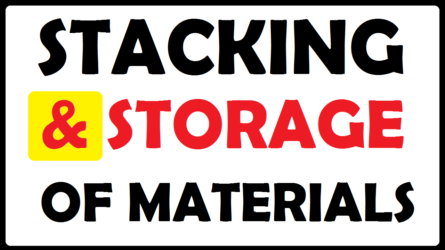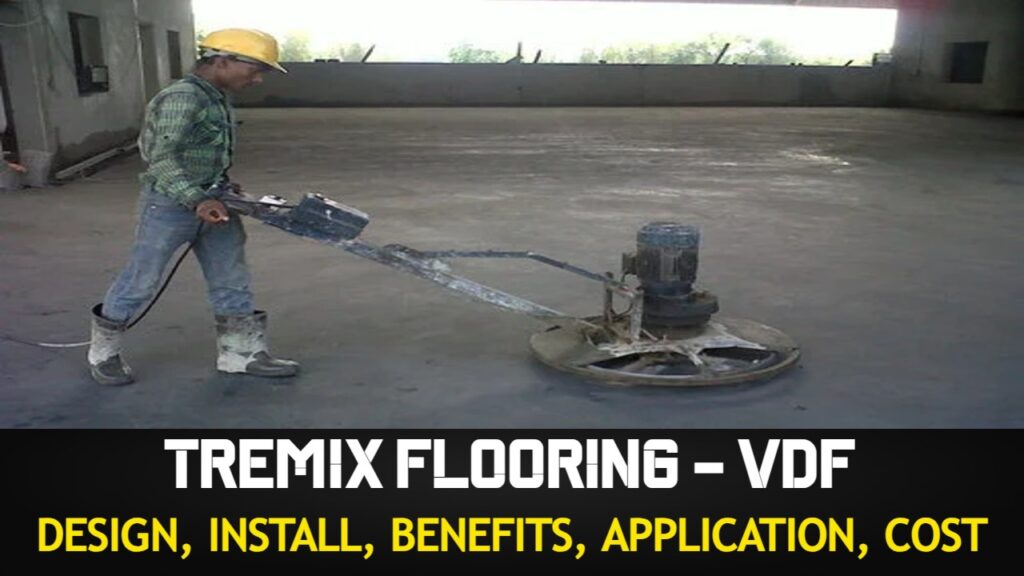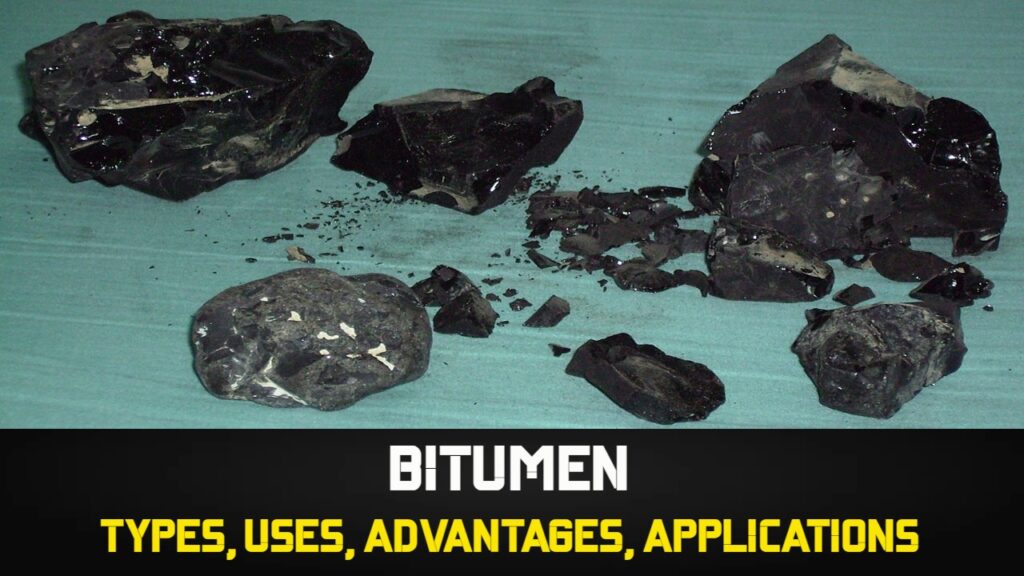Today I am going to explain the procedure of Stacking and Storage of Materials at the site. So read this post carefully so that you can take maximum advantage of it.
Contents
- 1 STACKING AND STORAGE OF MATERIALS
- 1.0.1 CEMENT
- 1.0.2 BRICKS
- 1.0.3 BLOCKS
- 1.0.4 FLOOR, WALL AND ROOF TILES
- 1.0.5 AGGREGATES
- 1.0.6 FLY ASH
- 1.0.7 STEEL
- 1.0.8 ALUMINIUM SECTIONS
- 1.0.9 DOORS, WINDOWS AND VENTILATORS
- 1.0.10 ROOFING SHEETS
- 1.0.11 GYPSUM BOARDS, PLYWOOD, FIBREBOARD, PARTICLE BOARD, BLOCK BOARD
- 1.0.12 GLASS SHEETS
- 1.0.13 CAST IRON, GALVANIZED IRON AND ASBESTOS CEMENT PIPES AND FITTINGS
- 1.0.14 POLYETHYLENE PIPES
- 1.0.15 UNPLASTICIZED PVC PIPES
- 1.0.16 BITUMEN, ROAD TAR, ASPHALT, ETC.
- 1.0.17 WATER
- 1.0.18 OIL PAINTS
- 1.0.19 SANITARY APPLIANCES
- 1.0.20 OTHER MATERIALS
STACKING AND STORAGE OF MATERIALS
Today I am going to explain the procedure of Stacking and Storage of Materials at the site. So read this post carefully so that you can take maximum advantage of it.
CEMENT
Cement shall be stored at the worksite in a building or a shed that is dry, leak-proof and as moisture-proof as possible. The building or shed for storage should have a minimum number of windows, close-fitting doors. These should be kept closed as far as possible.
Cement shall be stored and stacked in bags and shall be kept free from the possibility of any dampness or moisture coming in contact with them. Cement bags shall be stacked off the floor on wooden planks in such a way as to keep about 150 mm to 200 mm clear above the floor. The floor may comprise of lean cement concrete or two layers of dry bricks laid on well-consolidated earth. A space of 600 mm minimum shall be left around between the exterior walls and the stacks.
In the stacks, the cement bags shall be kept close together to reduce the circulation of air as much as possible. Owing to pressure on the bottom layer of bags sometimes ‘warehouse-pack’ is developed in these bags. This can be removed easily by rolling the bags when the cement is taken out for use. Lumbed bags, if any should be removed and disposed of.
- Glossary Relating To Bitumen And Tar
- Losses in Pre Stress due to Elastic Shortening
- Jack Pressure for Single and Multi Pull Stressing
- Elongation & Modified Elongation in Prestressing
- Prestressing Materials Management at Site
- Prestressing : Definitions | Advantage | Application
- Evolution of Slip Form Now a Days
- Measure Horizontal Distance Using AutoLevel
- Bulking OF Fine Aggregates
- Concrete Cube Samples Taken for Different Volume
- Grades of Concrete as per IS 456 : 2000
- What is 1.54 in Concrete
- De Shuttering Period as per IS 456
- Grade Of Concrete And Its Cement, Sand And Aggregate Ratio
- Derivation Of (d²/162) – Unit Weight Of Bar
- Volume Of Different Shapes
The height of the stack shall not be more than 10 bags to prevent the possibility of lumping up under pressure. The width of the stack shall be not more than four bags length or 3 meters. In stacks, more than 8 bags high, the cement bags shall be arranged alternately length-wise and cross-wise so as to tie the stacks together and minimize the danger of topping over. Cement bags shall be stacked in a manner to facilitate their removal and use in the order in which they are received; a label showing date of receipt of cement shall be put on each stack to know the age of cement.
For extra safety during the monsoon, or when it is expected to store for an unusually long period, the stack shall be completely enclosed by a waterproofing membrane such as polyethylene, which shall close on the top of the stack. Care shall be taken to see that the waterproofing membrane is not damaged at any time during use.
Cement in gunny bags, paper bags, and polyethylene bags shall be stored separately.
In case cement is received in drums
These shall be stored on plane level ground, as far as possible near the concrete mixing place. After taking out the required quantity of cement, the lid of the drum shall be securely tied to prevent the ingress of moisture.
In case cement is received in silos
The silos shall be placed near the concrete batching plant. Proper access shall be provided for the replacement of silos.
BRICKS
Bricks shall be stacked in regular tiers as and when they are unloaded to minimize breakage and defacement. These shall not be dumped at the site.
Bricks stacks shall be placed close to the site of work so that the least effort is required to unload and transport the bricks again by loading on pallets or in barrows. Building bricks shall be loaded or unloaded a pair at a time unless palletized. Unloading of building bricks or handling in any other way likely to damage the corners or edges or other parts of bricks shall not be permitted.
Bricks shall be stacked on dry firm ground. For proper inspection of quality and ease in counting the stacks shall be 50 bricks long, 10 bricks high and not more than 4 bricks in width, the bricks were placed on edge, two at a time along the width of the stack. The clear distance between adjacent stacks shall not be less than 0.8 m. Bricks of each truckload shall be put in one stack.
Bricks of different types, such as clay bricks, clay fly ash bricks, fly ash lime bricks, sand-lime (calcium silicate) bricks, auto-clave bricks, etc. shall be stacked separately. Bricks of different classification and size considerations (such as conventional and modular) shall be stacked separately. Also, bricks of different types, such as solid, hollow and perforated shall be stacked separately.
BLOCKS
Blocks are available as hollow and solid concrete blocks, hollow and solid lightweight concrete blocks, Auto Claved Aerated Concrete blocks, concrete stone masonry blocks, and soil-based blocks.
Blocks shall be unloaded one at a time and stacked in regular tiers to minimize breakage and defacement. These shall not be dumped at the site. The height of the stack shall not be more than 1.2 m. The length of the stack shall not be more than 3.0 m, as far as possible and the width shall be of two or three blocks.
Normally blocks cured for 28 days only should be received at the site. In case blocks cured for less than 28 days are received, these shall be stacked separately. All blocks should be water cured for 10 to 14 days and air-cured for another 15 days; thus no blocks with less than 28 days curing shall be used in building construction.
Blocks shall be placed close to the site of work so that the least effort is required for their transportation.
FLOOR, WALL AND ROOF TILES
Floor, wall, and clay roof tiles of different types, such as cement concrete tiles (plain, coloured and terrazzo) and ceramic tiles (glazed and unglazed) shall be stacked on a regular platform as far as possible under cover in proper layers and in tiers and they shall not be dumped in heaps. In the stack, the tiles shall be so placed that the mould surface of one faces that of another. The height of the stack shall not be more than one meter. During unloading, these shall be handled carefully so as to avoid breakage.
Tiles of different quality, size and thickness shall be stacked separately to facilitate easy removal for use in work. Tiles when supplied by manufacturers packed in wooden crates, shall be stored in crates. The crates shall be opened one at a time as and when required for use.
Ceramic tiles and clay roof tiles are generally supplied in cartons which shall be handled with care. It is preferable to transport these at the site on platform trolleys.
AGGREGATES
Aggregates shall be stored at a site on a hard dry and level patch of ground. If such a surface is not available, a platform of planks or old corrugated iron sheets, or a floor of bricks, or a thin layer of lean concrete shall be made so as to prevent contamination with clay, dust, vegetable and other foreign matter.
Stacks of fine and coarse aggregates shall be kept in separate stockpiles sufficiently removed from each other to prevent the material at the edges of the piles from getting intermixed. On a large job, it is desirable to construct dividing walls to give each type of aggregates its own compartment. Fine aggregates shall be stacked in a place where loss due to the effect of wind is minimum.
FLY ASH
Fly ash shall be stored in such a manner as to permit easy access for proper inspection and identification of each consignment. Fly ash in bulk quantities shall be stored in stack similar to fine aggregates as specified in 1.11 to avoid any intrusion of foreign matter. Fly ash in bags shall be stored in stacks no more than 10 bags high.
STEEL
For each classification of steel, separate areas shall be earmarked. It is desirable that ends of bars and sections of each class be painted in distinct separate colours.
Steel reinforcement shall ordinarily be stored in such a way as to avoid distortion and to prevent deterioration and corrosion. It is desirable to coat reinforcement with cement wash before stacking to prevent scaling and rusting.
Bars of different classification, sizes and lengths shall be stored separately to facilitate issues in such sizes and lengths so as to minimize wastage in cutting from standard lengths.
In the case of long storage, reinforcement bars shall be stacked above ground level by at least 150 mm. Also in coastal areas or in case of long storage, a coat of cement wash shall be given to prevent scaling and rusting.
The structural steel of different classification, sizes and lengths shall be stored separately. It shall be stored above ground level by at least 150 mm upon platforms, skids or any other suitable supports to avoid distortion of sections. In coastal areas or in case of long storage suitable protective coating of primer paint shall be given to prevent scaling and rusting.
ALUMINIUM SECTIONS
Aluminum sections of different classification, sizes and lengths shall be stored separately, on a level platform undercover. The aluminum sections shall not be pulled or pushed from the stack nor shall be slided over each other, to protect the anodizing layer.
DOORS, WINDOWS AND VENTILATORS
While unloading, shifting handling and stacking timber or other lignocellulosic material based, metal and plastic door and window frames and shutters, care shall be taken that the material is not dragged one over the other as it may cause damage to the surface of the material particularly in the case of decorative shutters. The material should be lifted and carried preferably flat avoiding damage of corners or sides.
Metal and plastic doors, windows and ventilators shall be stacked upright (on their sills) on level ground preferably on wooden battens and shall not come in contact with dirt and ashes. If received in crates they shall be stacked according to manufacturer’s instructions and removed from the crates as and when required for the work.
Metal and plastic frames of doors, windows and ventilators shall be stacked upside down with the kick plates at the top. These shall not be allowed to stand for long in this manner before being fixed so as to avoid the door frames getting out of shape and hinges being strained and shutters drooping.
During the period of storage all metal doors, windows and ventilators shall be protected from loose cement and mortar by suitable covering such as tarpaulin. The tarpaulin shall be hung loosely on temporary framing to permit circulation of air to prevent condensation.
All timber and other lignocellulosic material based frames and shutters shall be stored in a dry and clean covered space away from any infestation and dampness. The storage shall preferably be in well ventilated dry rooms. The frames shall be stacked one over the other in vertical stacks with cross battens at regular distances to keep the stack vertical and straight.
- Design and Construction Of Pile Foundations
- Evolution of Retaining Structures
- Glossary Relating To Bitumen And Tar
- Aluminium Formwork Refurbishment
- Safety For Hydraulic Tensioning Jacks
- Methodology of Post Tensioning Work
- Properties of Prestressing HT Strand
- Prestressing : Definitions | Advantage | Application
- Slipform – Slipform Planning at Site
- Labour Productivity Norms in Slipform
- Dismantling Procedure of Slipform
- Slipform Reinforcement Schedule Planning
- Assembly of Stair Tower for Slipform
- Assembling Procedure of Tapering Slipform
- Assembling Procedure of Straight Slipform
- Classification Of Slip Form Work
- Design Considerations of SlipForm
- Evolution of Slip Form Now a Days
- Flowchart For Aluform Work At Site
- Dismantling Process of Aluminium Formwork
- Assembling Process of Aluminium Formwork
- Dismantling Of Slab Aluminium Formwork
- Dismantling Of Wall Column & Beam Formwork
- Aluminium Formwork Concreting Process
- Assembling of Wall Aluminium Formworks
- Assembly Process of Aluminium Formwork
- Aluminium Formwork Worksite Management
These cross battens should be of uniform thickness and placed vertically one above the other. The door shutters shall be stacked in the form of clean vertical stacks over the other and at least 80 mm above ground on pallets or suitable beams or rafters. The top of the stack shall be covered by a protecting cover and weighted down by means of scantlings or other suitable weights. The shutter stack shall rest on hard and level ground.
If any timber or other lignocellulosic material based frame or shutter becomes wet during transit, it shall be kept separate from the undamaged material. The wet material may be dried by stacking in shade with battens in between adjacent boards with free access of dry air generally following the guidelines laid down in IS 1141.
Separate stacks shall be built up for each size, each grade and each type of material. When materials of different sizes grades and types are to be stacked in one stack due to shortage of space, the bigger size shall be stacked in the lower portion of the stacks. Suitable pallets or separating battens shall be kept in between the two types of material.
ROOFING SHEETS
Roofing sheets shall be stored and handled in such a manner as not do damage them in any way.
Plain and corrugated asbestos cement sheets shall be stacked horizontally to a height of not more than one meter on a firm and level ground, with timber or another packing beneath them. If stacked in exposed position, they shall be protected from damage by the winds.
Asbestos cement sheets of same variety and size shall be stacked together. Damage sheets shall not be stacked with sound materials. All damaged sheets shall be salvaged as early as possible.
Corrugated galvanized iron sheets and aluminum sheets shall be stacked horizontally to a height of not more than 0.5 m on a firm and level ground, with timber or other packing beneath them. To protect them from dust and rainwater, these shall be covered with tarpaulin or polyethylene sheets.
Plastic sheets and glass-reinforced plastic (GRP) sheets shall be stacked under a shed to a height of not more than 0.5 m on a firm and level ground with timber or another packing beneath them.
GYPSUM BOARDS, PLYWOOD, FIBREBOARD, PARTICLE BOARD, BLOCK BOARD
These boards shall be stored flat in a covered clean and dry place. Different sizes and types of each of these boards shall be stacked separately.
The board shall be stacked on a flat platform on which a wooden frame shall be constructed with 50 mm x 25 mm battens in such a way that it will give support to all four edges and corners of the boards with intermediate battens placed at suitable intervals to avoid warping.
The boards shall be stacked in a solid block in a clear vertical alignment. The top sheet of each stack shall be suitably weighed down to prevent warping wherever necessary.
The boards shall be unloaded and stacked with utmost care avoiding damage to the corners and surface. In the case of decorative plywood and decorative boards, the surfaces of which are likely to get damaged by dragging one sheet over another it is advisable that these are lifted as far as possible in pairs facing each other.
GLASS SHEETS
It is important that all glass sheets whether stored in crates or not shall be kept dry. Suitable covered storage space shall be provided for the safe storage of the glass sheets. In removing glass sheets from crates, great care shall be taken to avoid damages. The glass sheets shall be lifted and stored on its long edges against a vertical wall or other support with the first sheet so placed that its bottom edge is 25 mm from the vertical support.
The stacks shall be of not more than 25 panes and shall be supported at two points by fillets of wood at 300 mm from each end. The whole stack shall be as close and as upright as possible.
The glass sheets of different sizes, thickness and type shall be stacked separately. The distance between any two stacks shall be of the order of 400 mm.
CAST IRON, GALVANIZED IRON AND ASBESTOS CEMENT PIPES AND FITTINGS
The pipes shall be unloaded where they are required when the trenches are ready to receive them.
Storage shall be done on a firm, level and clear ground and wedges shall be provided at the bottom layer to keep the stack stable.
The stack shall be in pyramid shape or the pipes length-wise and cross-wise in alternate layers. The pyramid stack is advisable in smaller diameter pipes for conserving space in storing them. The height of the stack shall not exceed 1.5 m.
Each stack shall contain only pipes of the same class and size, with consignment or batch number marked on it with particulars of suppliers wherever possible.
Cast iron detachable joints and fittings shall be stacked under cover separately from the asbestos cement pipes and fittings.
Rubber rings shall be kept clean, away from grease, oil heat and light.
POLYETHYLENE PIPES
Natural polyethylene pipe should be stored under cover and protected from direct sunlight. However, black polyethylene pipes may be stored either undercover or in the open.
Coils may be stored either on edges or stacked flat one on top of the other, but in either case, they should not be allowed to come into contact with hot water or steam pipes and should be kept away from a hot surface.
Straight lengths should be stored on horizontal racks giving continuous support to prevent the pipe taking on a permanent set.
Storage of pipes in heated areas exceeding 27 degrees C should be avoided.
UNPLASTICIZED PVC PIPES
The pipe should be given adequate support at all times. Pipes should be stored on a reasonably flat surface free from stones and sharp projections so that the pipe is supported throughout its length. In storage, pipe racks should be avoided. The pipe should not be stacked in large piles, especially under warm temperature conditions as the bottom pipes may distort, thus giving rise to difficulty in jointing. Socket and spigot pipes should be stacked in layers with sockets placed at alternate ends of the stacks to avoid lopsided stacks.
It is recommended not to store pipe inside another pipe.
On no account should pipes be stored in a stressed or bent condition or near the sources of heat.
Pipes should not be stacked more than 1.5 m high. Pipes of different sizes and classes should be stacked separately.
The ends of the pipe should be protected from abrasion particularly those specially prepared for jointing, either spigot or socket solvent welded joints or shouldered for use with couplings.
In tropical conditions, pipes should be stored in shade. In very cold weather, the impact strength of PVC is reduced making it brittle and more care in handling shall be exercised in wintry condition.
If due to the unsatisfactory storage of handling a pipe becomes kinked, the damaged portion should be cut out completely. Kinking is likely to occur only on very thin-walled pipes.
BITUMEN, ROAD TAR, ASPHALT, ETC.
All types of bitumen, road tar, asphalt, etc, in drums or containers, shall be stacked vertically on their bottoms in up to 3 tiers. Leaky drums shall be segregated. Empty drums shall be stored in pyramidal stacks neatly in rows.
WATER
Wherever water is to be stored for construction purposes, this shall be done in proper storage tanks to prevent any organic impurities from getting mixed up with it.
OIL PAINTS
All containers of paints, thinners and allied materials shall preferably be stored in a separate room on floors with sand cushions. The room shall be well-ventilated and free from excessive heat, sparks of flame and direct rays of the sun. The containers of paint shall be kept covered or properly fitted with lid and shall not be kept open except while using. The containers of paints have expiry date marked by the manufacturers, which should be highlighted so as to facilitate the use of paint within the due period.
SANITARY APPLIANCES
All sanitary appliances shall be carefully stored undercover to prevent damage. When accepting and storing appliances, advance planning shall be made regarding the sequence of removal from the store to the assembly positions. Supporting brackets shall be so stored as to be readily accessible for use with the appliances.
OTHER MATERIALS
Small articles like nails, screws, nuts and bolts, door and window fittings, polishing stones, protective clothing, spare parts of machinery, linings, packing, water supply and sanitary fittings, electrical fittings, insulation board, etc, shall be kept in suitable and properly protected storerooms. Valuable small material such as copper pipes and fittings shall be kept under lock and key.
Source : CPWD SPECIFICATION VOLUME-1
I hope you find this information useful. If there is something that I have missed or I do not know, you can comment and tell me which I will try to rectify as soon as possible.
If you have liked this post of mine, then use the social link given below and share it among your friends on social media. Thanks
SHARE THIS POST, IF YOU LIKE IT !!
Padhega India Tab Hi Badhega India | पढ़ेगा इंडिया तब ही बढ़ेगा इंडिया






